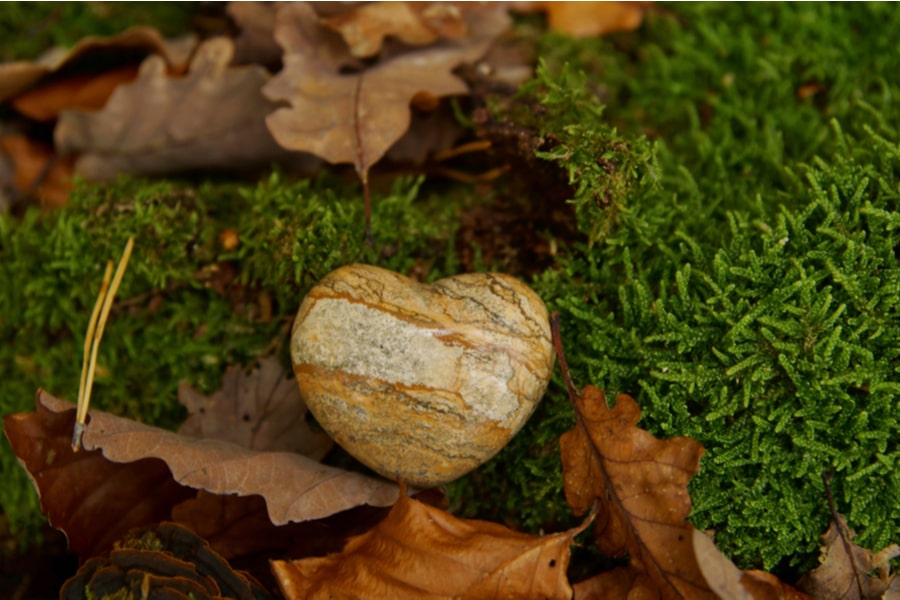
Green Funerals : An Increasingly Popular Tradition
In the United States, many people are bucking tradition in the favor of more environmentally friendly funerals. Traditional Western funeral and burial practices carry a heavy carbon footprint. While cremation is more environmentally friendly than a traditional burial, cremation uses a lot of energy and results in millions of tons of carbon dioxide released into the atmosphere.
With a traditional burial, there is the use of chemicals like formaldehyde, and burying the body on top of concrete. Also, a traditionally embalmed body buried in a casket will not decompose naturally. Graveyards require maintenance, and traditional caskets take a lot of energy to make. Concrete vaults used for storing the remains of the dead are also environmentally expensive, given the energy-intensive use of concrete.

Natural Burial Grounds
One of the ways that people are choosing to protect the environment is by eschewing the traditional embalming practices, where the body is preserved with chemicals. Then they choose a biodegradable casket, like one woven from wood, so that their body, and the casket itself, can organically decompose right into the earth. This requires the use of a natural burial ground. In 2006 there was only one natural burial ground. Four years later there were 22 cemeteries with natural burial grounds certified by the Green Burial Council. Cemetery owners anticipate a rise in interest in environmentally friendly funerals as more and more baby boomers start to plan for their death. The baby boomer generation is one of the first generations to care about the environment and their impact on it.
Resomation
Resomation, also known as bio-cremation or aquamation, is a cremation process that emits zero carbon dioxide. While only a handful of states have approved resomation in 2010, that number has jumped to twenty-two states in 2020. Resomation uses water and potassium hydroxide and a large stainless-steel tank. The body is placed in a tank, and then the tank is filled with water and the chemical potassium hydroxide. The tank is then heated for several hours until the body “melts”. The remains are then flushed into the sewage system, giving the process the irreverent nickname of “toilet burial”. While some of the remains can be placed in an urn, most of what’s in the tank is flushed. Some people question whether this is an environmentally friendly process, given that more than 100 pounds of “human residue” is being introduced to the sewage system.
Memorial Reef Ball
In a unique and popular option, people can opt to have their ashes turned into a “reef ball”, which is then used to grow artificial reefs and help coral reefs and their inhabitants. The reef ball features a textured surface for coral polyps to adhere to and a hollow inside to shelter fish and other marine creatures. The reef ball is often emblazoned with a water-safe plaque, similar to a gravestone, listing the deceased’s name, date of birth and death, and any other information they or their family wish.
The Living Urn Grows Trees
If you or a loved one cares about the environment a great deal, consider using one of The Living Urn’s environmentally friendly urns. The people behind Living Urn “want to make a difference in the lives of others while at the same time giving back to nature.”. Their most popular urn, the BioUrn, is made from recycled plant materials and is assembled by wetting the materials together and drying them with heat and added pressure. That means no glue, no chemicals, and no machinery which results in a very small carbon footprint. Their most popular urn is the Living Urn, which comes complete with a young tree. The urn is filled with your loved one’s ashes and then buried in the earth with a tree on top. This creates a living memorial to your dearly departed, one that can be enjoyed for generations. Trees also absorb carbon dioxide, so this memorial to your loved one supports the planet they called home.
The Living Urn also offers the Eco Scattering Urn, which is made with environmentally friendly and beautiful bamboo. Bamboo is a sustainable resource and is one of the most eco-friendly building materials on the planet.
The award-winning Flow Ice Urn is one of Living Urn’s eco-friendly and beautiful scattering urns. The ashes are placed in a box made of ice, which is then placed in a body of water, where it slowly dissolves, releasing the ashes back to nature.
Whatever your urn needs are, the Living Urn has a beautiful, well-designed, and environmentally friendly option for you and your family.


